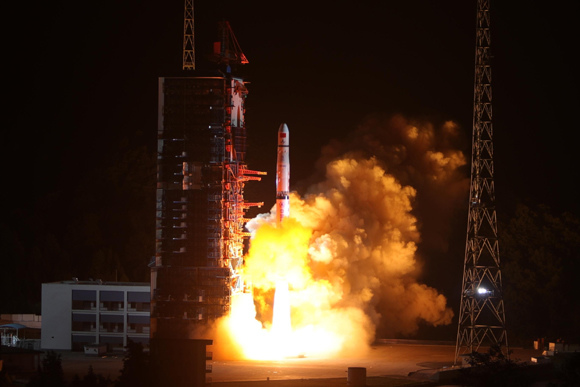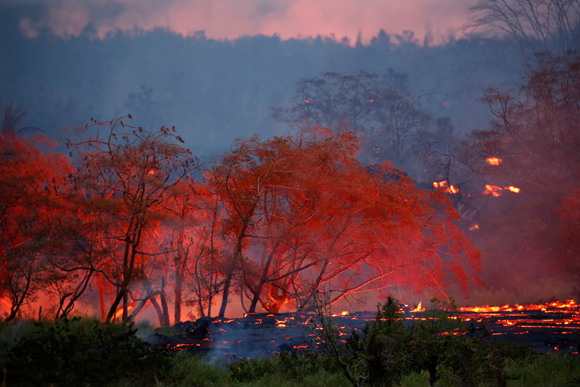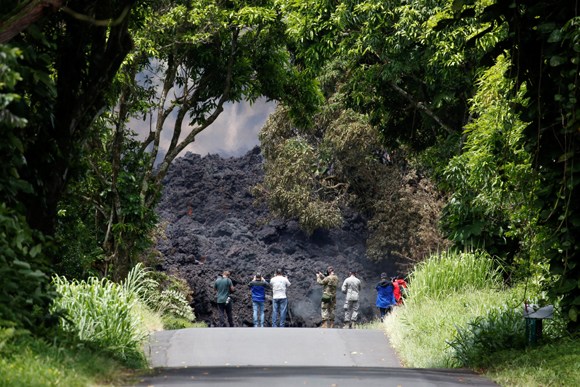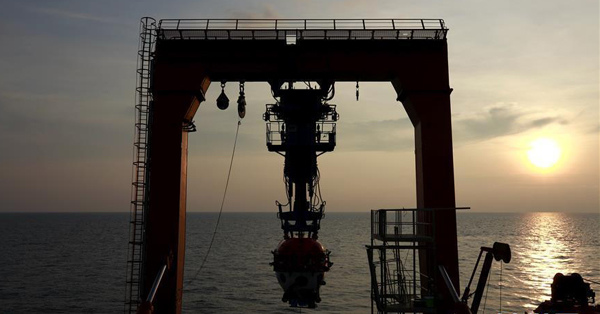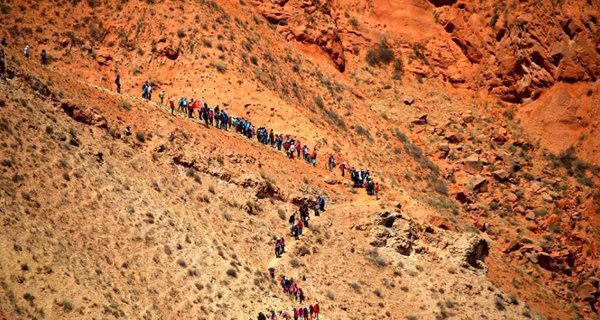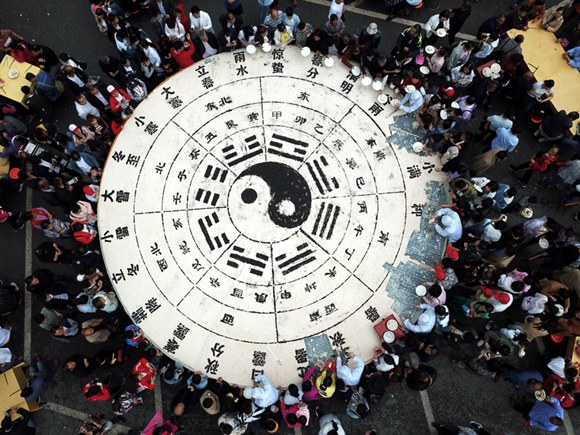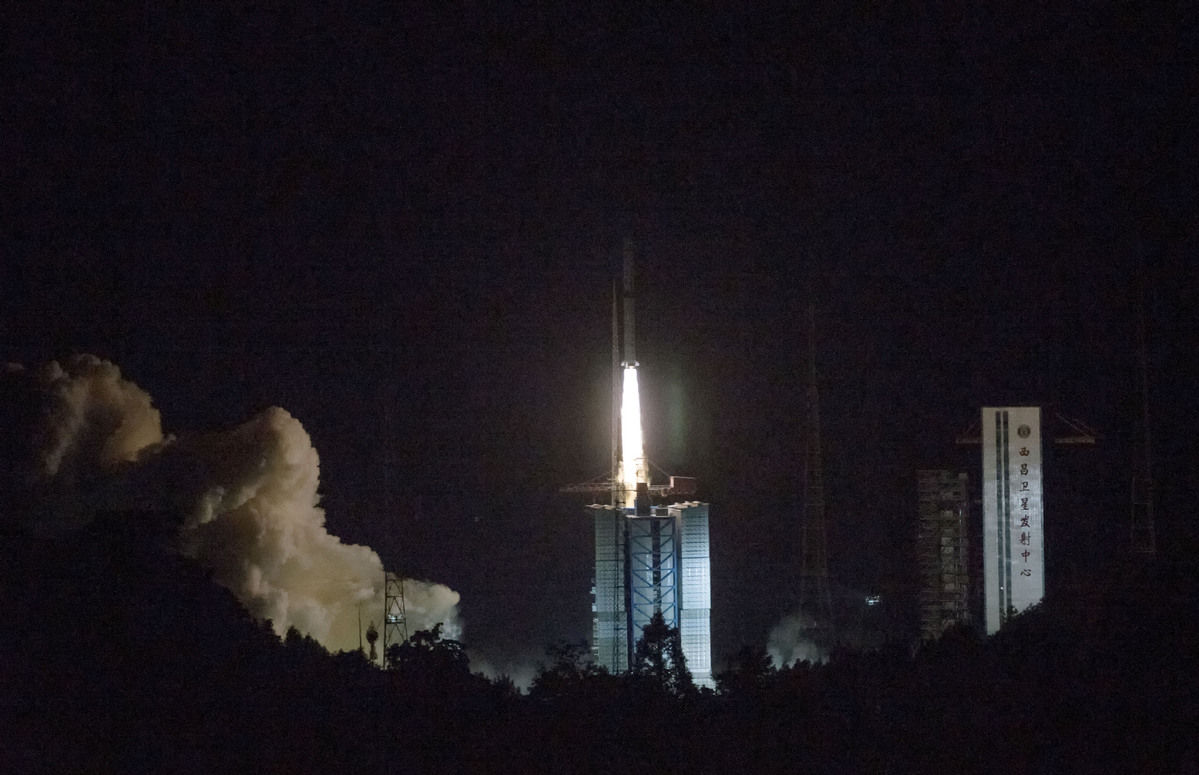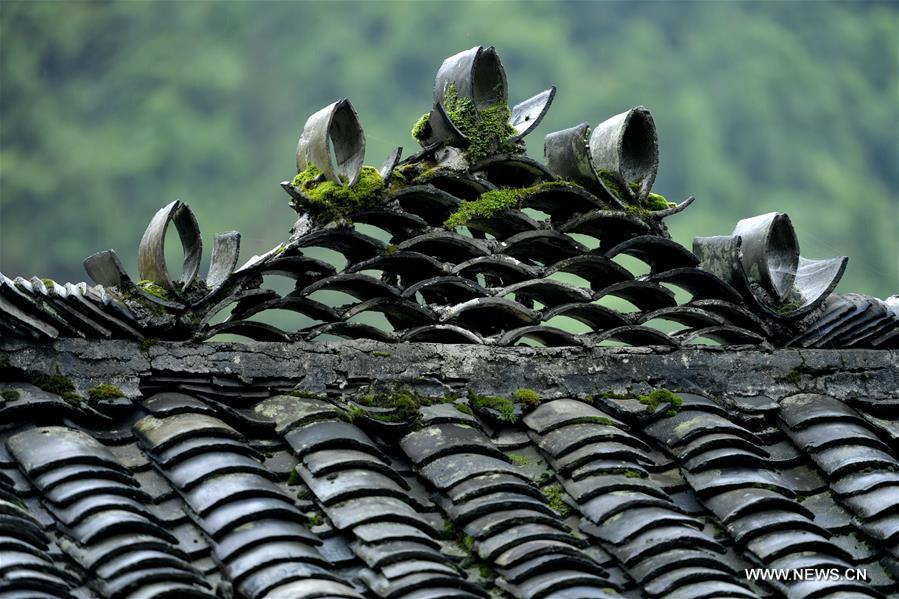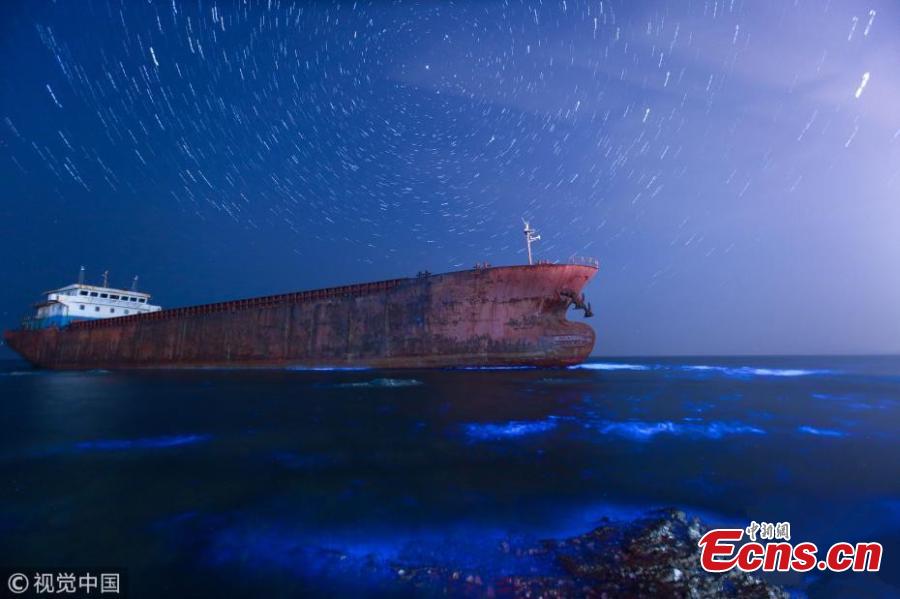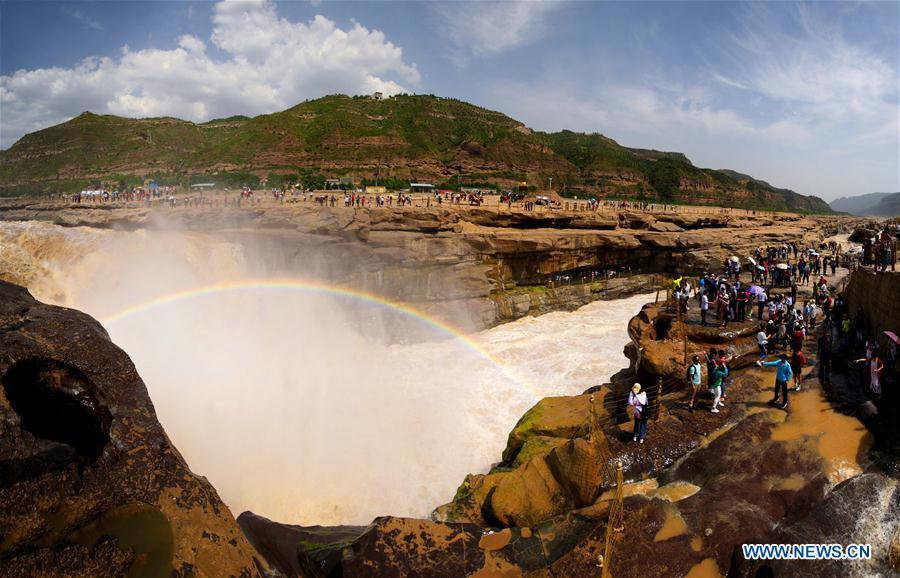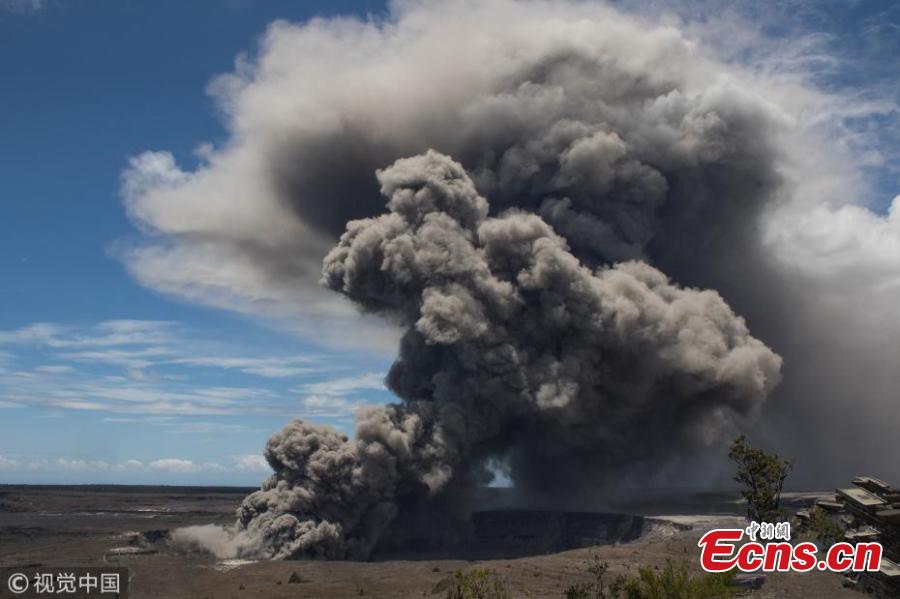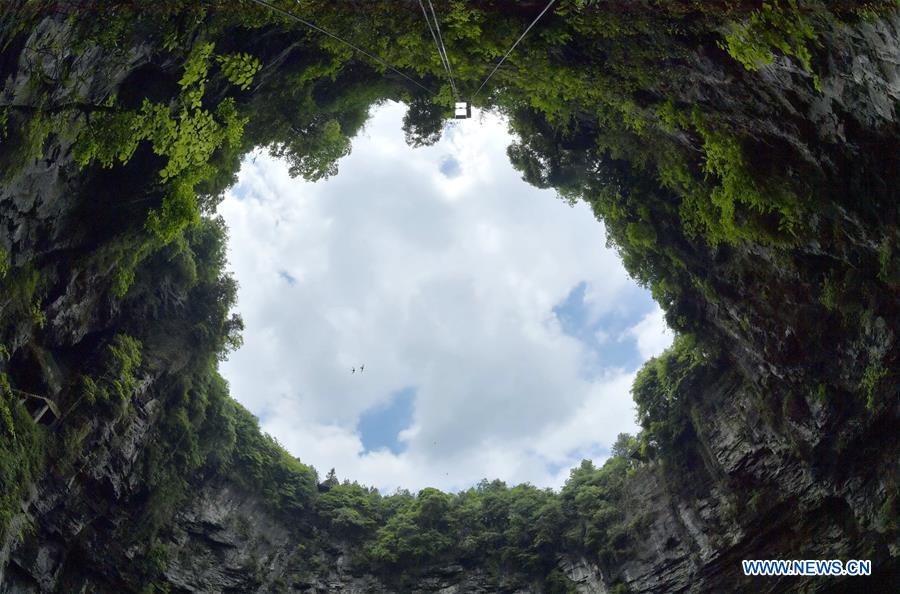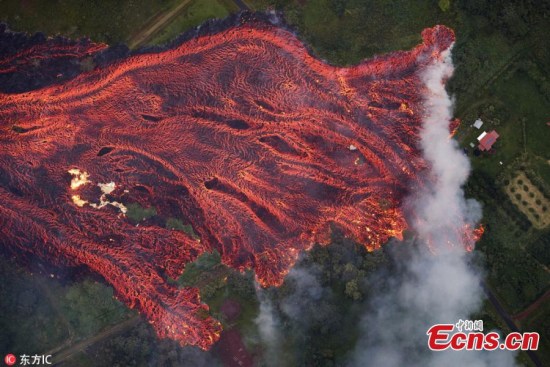
In this May 19, 2018 photo released by the U.S. Geological Survey, lava flows from fissures near Pahoa, Hawaii. Kilauea volcano began erupting more than two weeks ago and has burned dozens of homes, forced people to flee and shot up plumes of steam from its summit that led officials to distribute face masks to protect against ash particles. (Photo/IC)
Hawaii's Kilauea volcano has created a potentially deadly new hazard for local residents as lava flows pouring into the Pacific Ocean Sunday could produce noxious clouds of acid fumes, steam and fine glass-like particles.
The Hawaii County Civil Defense warned the public to beware of caustic plumes of "laze" formed from two streams of hot lava gushing into the ocean after cutting across Highway 137 on the south coast of the Big Island late Saturday and early Sunday.
The laze -- a term combining the words lava and haze -- from the plume extended as far as 24 km west of where the lava met the sea. It was just offshore and running parallel to the coast.
Laze killed two people immediately adjacent to the coastal entry point in 2000, said the U.S. Geological Survey. Scientists said even a wisp can irrigate the skin and eyes and cause breathing problems.
Kilauea volcano started erupting over two weeks ago and has burned dozens of homes, leading to the evacuation of thousands of people.











